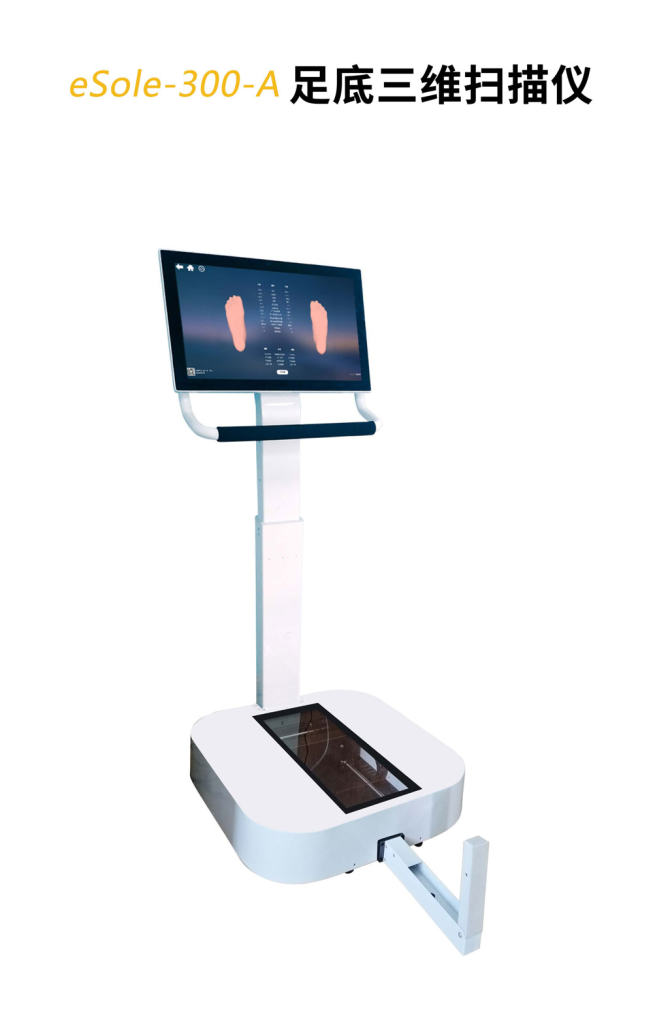In the pursuit of personalization and ultimate comfort, the premium shoe market is undergoing an unprecedented transformation. With the rapid development of technology, 3D foot scanners, as an emerging force, are quietly reshaping the boundaries of shoe design and customization. This technology not only allows for the precise capture of every consumer’s foot contour but also ushers in a new era of shoe customization. However, along this path filled with opportunities, there are also numerous challenges and uncertainties.
Technological Innovation: Precision Measurement
3D foot scanners use advanced optical or laser technology to complete a comprehensive scan of the foot within seconds, generating a high-precision 3D model. This model includes critical information such as foot length, width, arch height, and foot curve, providing shoe designers with unprecedented personalized data support. Using this data, designers can precisely adjust the shape of the lasts, material distribution, and insole design, ensuring that every pair of shoes perfectly fits the wearer’s foot, delivering an unparalleled comfort experience.
Personalized Customization: Meeting Diverse Needs
In the premium shoe market, consumers’ demand for personalization and uniqueness is growing. The introduction of 3D foot scanners has made shoe customization go beyond simple color or material choices, delving into personalized matching based on foot shape. Whether it’s the extreme pursuit of fit by sports enthusiasts or the dual consideration of comfort and appearance by business professionals, these needs can be met through customized services. This consumer-centric design philosophy is gradually becoming a new trend in the premium shoe industry.

Challenges and Strategies
Technology Popularization and Cost Control
Although 3D foot scanners have matured technologically, their high cost remains a major factor constraining their widespread adoption. For many small and medium-sized enterprises, introducing this technology means significant financial pressure. Therefore, reducing production costs and improving equipment efficiency is a critical issue that the industry needs to address. Additionally, promoting technological innovation to drive miniaturization and portability of the devices is key to expanding market applications.
Data Privacy and Security
As the collection and processing of personal data become more frequent, data privacy and security issues are becoming increasingly prominent. 3D foot scanning involves a large amount of sensitive personal information. Ensuring the secure storage and legal use of this data is a challenge that the industry must face. Companies should establish robust data protection mechanisms, strengthen data encryption and access controls, and enhance users’ data security awareness to maintain a safe and trustworthy consumer environment.
Market Acceptance and Consumer Education
Despite the broad prospects of customized services in the premium market, consumer acceptance still requires time to cultivate. Some consumers may be hesitant about new technologies or lack a clear understanding of the value of customized services. Therefore, companies need to increase marketing efforts, using case studies and experiential activities to enhance consumers’ awareness and trust in 3D foot scanning technology. Simultaneously, continuously optimizing service processes to improve user experience will make customized services more convenient and efficient.
3D foot scanners, as an emerging force in the premium shoe market, are leading the industry’s innovation and development with their unique charm. Faced with a situation where challenges and opportunities coexist, companies need to innovate continuously and explore boldly, driving progress with technology and consumer-centric approaches. Together, they can promote the arrival of the era of shoe customization. In the future, with continuous technological advancements and market maturity, we have every reason to believe that 3D foot scanners will shine even brighter in the premium shoe market.
